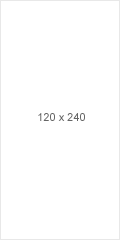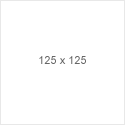- Home
- News
- Alternative Sch
- Flexischooling
- Non School
- Research
- Think Pieces
- Journals
- Books
- Events
- Share
Comments are closed.
Quick Links
- Centre for Personalised Education -Facebook
- Flexischooling Handbook: England and Wales
- Flexischooling Information Sheets
- Flexischooling Families UK -Facebook
- Flexischooling Practitioners UK -Facebook
- Light on Ed Research Network
- Home Ed and your LA -Facebook
- Legal Advice for Ed Startups -Facebook
- Educational Heretics Press -Facebook
- CPE-PEN (Twitter)
- CPE – Facebook Page

Categories
- AERO
- Alternatives
- Books & Reviews
- Conferences and Courses
- CPE / PEN News and Comment
- Democratic Ed News
- Digital Technologies
- E-briefing
- Educational Heretics Press
- Film and Animation
- Flexischool News
- Flexischooling
- Home-Based Education
- Human Scale Ed News
- innovation
- Journals
- Latest Journal
- Light on Ed Research Network
- Links
- Magazines
- News and Comment
- Personalised Education
- Research
- Self-Directed Ed News
- Self-Managed Learning College
- Small School News
- Think Pieces and Provocations
- Uncategorized
- Unschooling News




Home » IALA January E-News:
IALA January E-News:
CPE / PEN News and Comment, E-briefing, Links, Research · Tagged: alernatives, choice, home-schooling, IALA
Range of Alternatives
We recently created the outline below showing the kinds of choices available to students in some parts of Minnesota. This may be similar to other states. By no means are all of these alternatives available to all students in all places but it represents a major shift in what parents had to choose from in 1970 which was almost nothing in the public sector. In that sense it represents major progress in the IALA mission of leading, promoting and supporting learning alternatives in education to better match needs of every child. Of course, much remains to be done to reach the policy that every state and the federal government provide a choice of different programs for each child.
Minnesota Options for Students
1. State approved alternative programs (SAAP)
2. Charter schools
3. Online/distant learning schools
4. Traditional schools
5. Magnet schools
6. Post secondary enrollment options (early college enrollment)
7. Open enrollment
8. Nonpublic schools
9. Programmatic schools
10. Recovery schools
11. Democratic schools
Homeschooling Sharp Increase
January 8th, 2009
The percentage of the school-age population that was home-schooled showed a significant increase from 2.2% in 2003 to 2.9% in 2007 according to a U.S. Department of Education report (http://nces.ed.gov/pubs2009/2009030.pdf). The number of home-schooled kids hit 1.5 million in 2007, up 36% since 2003. The report identified seven reasons parents give as their motivation for home-schooling their children.
share:
About the author
Related Posts
Centre for Personalised Education Fact Sheet: ‘What should I do if my child’s other parent doesn’t want me to home educate him?
Centre for Personalised Education Fact Sheet: 'What should I do if my child's other parent doesn't want me
Home Education – Frequently Asked Questions. Centre for Personalised Education Advice.
Home Education - Frequently Asked Questions.
Centre for Personalised Education Advice.
Home
Centre for Personalised Education eNews 12th June 2019
Get the latest eNews from the Centre for Personalised Education here:
Centre for Personalised Education eNews
DfE Consultation on ‘Children not in School’ Centre for Personalised Education Response
The DfE Consultation on Children not in School Closes 24 June 2019.
This is
CPE Communications June 2019